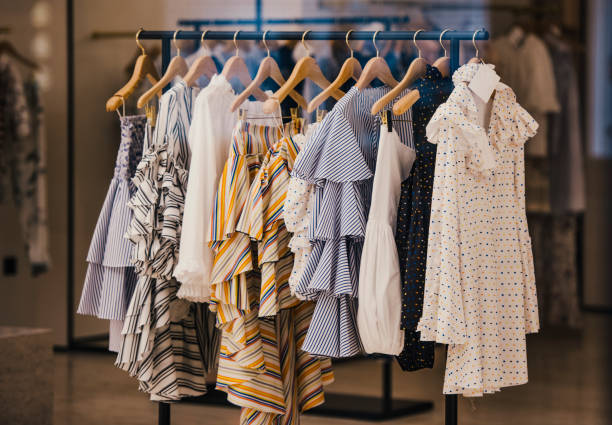The Influence of Social Media on Today's Boutique Fashion Trends
The Influence of Social Media on Today's Boutique Fashion Trends
Blog Article
A Deep Dive Into the Globe of High-Fashion Runways: Comprehending Clothing as Art
Developers, a lot like skillful artists, weave elaborate stories through color, kind, and fabric, redefining and challenging conventional norms elegance standards. As we discover these sartorial spectacles, we must ponder: what role does style play in forming social worths, and just how does it show the ever-changing tapestry of human feeling and identification?
The Evolution of Runway Reveals
The trajectory of runway shows has transformed substantially over the years, advancing from exclusive industry occasions to captivating spectacles that blend fashion with art. Commonly, path shows made love events, held in ateliers or tiny venues, mainly attended by purchasers and industry experts. These very early discussions concentrated on the garments' workmanship and business feasibility, offering a useful and direct screen of seasonal collections.
As the fashion business increased, the nature of path programs started to transform. The 1970s and 1980s noted a transforming point, with developers looking for to distinguish themselves via more theatrical presentations. This period saw the increase of intricate sets, choreographed models, and thematic narratives, declaring a new age where the path came to be an experiential platform. The programs changed into a form of narration, where each collection communicated a distinctive story or principle.
In recent years, technology and social media have better revolutionized path shows, making them easily accessible to a global target market. Livestreaming and digital platforms have actually equalized fashion, enabling lovers worldwide to witness these occasions in real-time (boutique fashion). This advancement shows a broader social change, where high-fashion runways work as a vibrant crossway of design, advancement, and performance
Designers as Enthusiast Artists
How have designers transcended their roles to become visionary artists? Designers in the high-fashion market have actually blurred the lines between practical garment development and the conceptual world of art. This change is noticeable in the method they approach their collections, not just as clothes but as extensive expressions of society, identification, and feeling. By welcoming creative disciplines such as sculpture, painting, and progressive setups, developers craft garments that test typical fashion standards and boost them to art kinds.
Visionary designers attract inspiration from a myriad of sources, consisting of abstract art, historical recommendations, and individual narratives. They have a special capability to visualize and emerge ideas that push the boundaries of conventional fashion, commonly redefining aesthetic standards at the same time. This creative ingenuity is showcased with dramatic shapes, innovative materials, and intricate craftsmanship, which invite customers to experience fashion as greater than simply wearable products.
In addition, the path functions as a canvas for these musicians, where lights, songs, and set style coalesce to produce immersive experiences. These discussions are not simply display screens of clothing yet are orchestrated efficiencies that evoke feeling and prompt idea, attesting the designer's function as a real musician in the modern cultural landscape.
Social Impacts in vogue
Social tapestry weaves its detailed patterns into the fabric of fashion, influencing designers internationally. The dynamic interchange of cultural stories, practices, and icons notifies and inspires collections that elegance high-fashion paths. Designers thoroughly attract from their heritage or engage with cultures unique from their very own, crafting garments that serve as aesthetic narratives. This cultural discussion not just enriches the visual variety yet also promotes a much deeper understanding and gratitude of worldwide identities.
The influence of culture on style is commonly seen in the reinterpretation of conventional garments and patterns. The use of Japanese kimonos, Indian saris, or African prints in modern fashion reflects a blend of cultural authenticity and modern aesthetic appeals. Developers such as Valentino's Pierpaolo Piccioli and Alexander McQueen's Sarah Burton have been recognized to incorporate abundant social themes right into their couture collections, converting background into wearable art.

Development in Fabric and Design
Development in material and design consistently improves the landscape of high-fashion, pressing boundaries and redefining opportunities. Designers are significantly discovering the assimilation of modern technology, such as 3D printing, which enables for the production of complicated frameworks that were formerly unimaginable.
Moreover, sustainability has actually become a pivotal style in material advancement. The apparel industry is seeing a surge in using green products, derived from recycled plastics, natural fibers, and even biodegradable parts. These innovations not only use new appearances and visual appeals but likewise address essential environmental issues. Developers are accepting these products to craft garments that are discover this both conscious and aesthetically striking of their environmental footprint.
In terms of design, speculative forms and avant-garde silhouettes are continually changing the runway. By including unconventional products and cutting-edge techniques, developers grow garments that blur the line in between style and art, setting brand-new standards for creativity and expression in the high-fashion ball.
Impact of Style on Society
Style possesses an extensive influence on society, functioning as both a reflection of social identity and a catalyst for social change. Via its advancement, style has mirrored societal changes, enveloping the zeitgeist of numerous ages. The flapper gowns of the 1920s personified a newfound sense of ladies's freedom, while the strong prints of the 1960s echoed the advanced spirit of the time. High-fashion paths, particularly, work as platforms for difficult standards and redefining beauty criteria. Developers utilize these places to attend to pressing social problems, from sustainability to variety, thereby forming public discussion.
Furthermore, fashion has the power to bridge cultural spaces, promoting understanding and recognition among diverse teams. As globalisation accelerates, the cross-cultural exchange basics of style ideas comes to be significantly considerable, advertising inclusivity and variety. The increase of streetwear, stemming from web link urban subcultures, illustrates how fashion can go beyond socio-economic limits, giving people a way of self-expression and empowerment.
Essentially, style is not merely regarding visual appeals; it is a vibrant pressure that influences values, perspectives, and societal development (boutique fashion). By constantly interacting with cultural and social currents, fashion stays an integral part of the collective human experience

Conclusion
Developers, akin to visionary musicians, manage collections that show identity, emotion, and cultural narratives, challenging typical appearances. This crossway of fashion and artistry not only captivates audiences worldwide but also influences societal understandings and promotes a much deeper admiration for social variety.

Cultural tapestry weaves its detailed patterns right into the fabric of fashion, affecting developers internationally.Fashion wields a profound influence on culture, serving as both a reflection of cultural identity and a catalyst for social modification.
Report this page